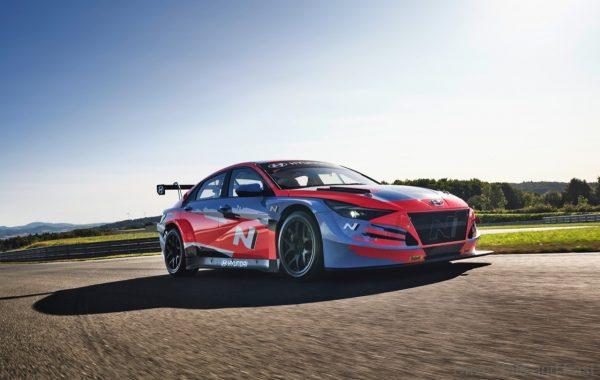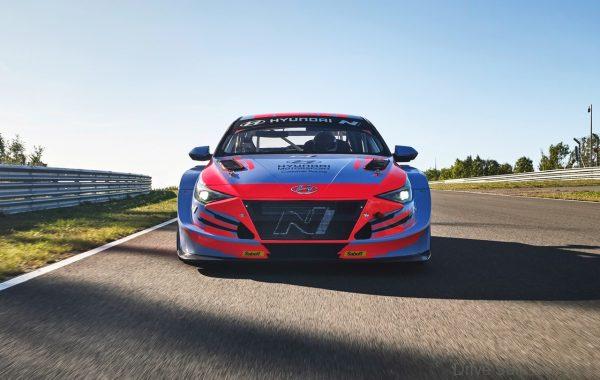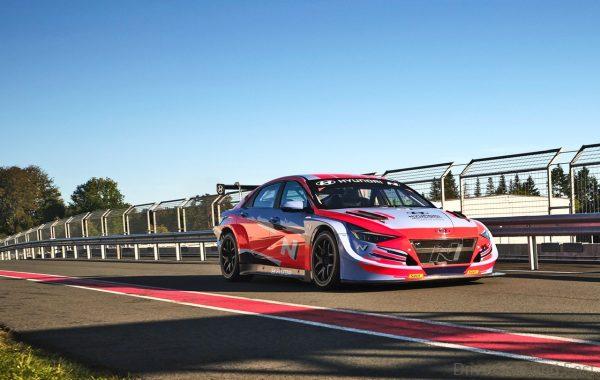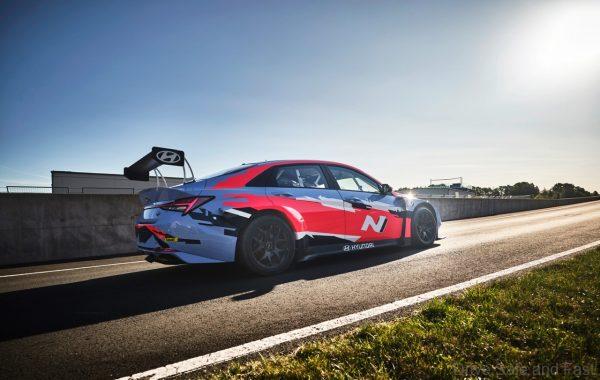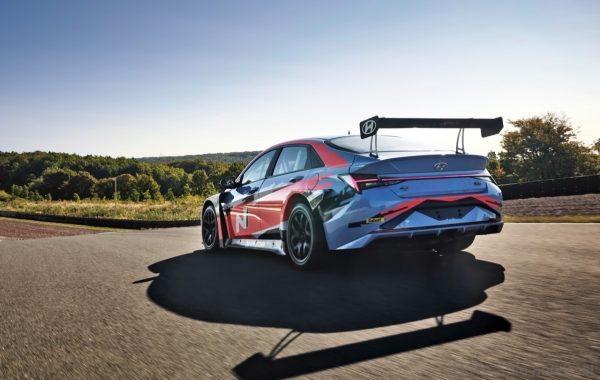Hyundai Motorsport seem to be on the offensive despite the ongoing pandemic. The just showed their latest toy for customer racing teams in Europe: the new Elantra N TCR. This touring car joins the Veloster N TCR and i30 N TCR in Hyundai Motorsport’s stable. Lessons learnt over the last two years with these two other models went into the development of this latest model, though the company also says they started with a blank sheet.
The Elantra N TCR has been tested over the last 3 months across several circuits across Europe, with over 5,000 kilometres done. In line with TCR regulations, expect a 2-litre turbo petrol engine putting out about 340hp and 410Nm of torque. That power will be sent to the front wheels via a 6-speed paddle-shift operated gearbox.
While the Elantra N TCR isn’t relevant to the Malaysian market, we can probably look forward to seeing the new standard Elantra on our shores sooner or later. And that thing is built on the same bones as this. There’s even an N Line variant with the aggressive look.

Here’s the press release with more.
PRESS RELEASE
Hyundai Motorsport has revealed a new addition to its range of TCR-specification packages offered to customer teams. The new addition, the Hyundai Elantra N TCR, is the latest car to be designed and built by the company’s Customer Racing department.
The Elantra N TCR was revealed for the first time alongside road-going models at last weekend’s Beijing Motor Show following a busy first three months of testing, during which the car has already completed 5,000km of running.
The new design further expands Hyundai Motorsport’s offering to TCR competitors, joining the hugely successful i30 N TCR and Veloster N TCR. The addition will ensure maximum relevance to customers around the world, with the new car intended for teams in those markets where the standard Elantra model is sold.
Work on the project started from a blank sheet of paper, allowing the Customer Racing department’s designers and engineers to take full advantage of the Elantra’s stable, high-performance chassis and sedan body shape to optimise the design. They were also able to apply the expertise gained from more than two years of customers’ racing with the i30 N TCR and Veloster N TCR to create the best overall racing package, while also taking the opportunity to improve on the existing cars where possible.
In line with the TCR regulations the Elantra N TCR is front-wheel drive and is powered by a two-litre turbocharged engine derived from a brand new base engine taken from Hyundai’s family of road-going models. The car will share the same six-speed, paddle-shift operated gearbox as the other Hyundai TCR designs, while the use of the Elantra model as a base provides an instantly recognizable silhouette on track.
After a first test in June development of the Elantra N TCR is well underway. The team of engineers responsible for the car has already visited a number of circuits around Europe to develop both sprint and long-distance packages in parallel. As part of the testing schedule the Customer Racing department has sought the opinion of several drivers. This includes Gabriele Tarquini, who was instrumental in developing the i30 N TCR among all four of the current i30 N TCR drivers from the WTCR – FIA World Touring Car Cup grid. The range of feedback gathered will create a well-rounded final package that is perfectly suited to the customer focus of the TCR regulations to add to the success of Hyundai Motorsport-built cars in series worldwide.
Since arriving in the world of circuit racing at the end of the 2017 season i30 N TCR customers have won back-to-back WTCR drivers’ titles, winning a third of all racing contested in the series to date. In total Hyundai teams won championships in eight different series in 2019, including the double of drivers’ and teams’ honours in the USA-based IMSA Michelin Pilot Challenge at the end of the first competitive season for the Veloster N TCR.
Testing with the car will continue in the coming months, with the first chassis to be delivered to customers before the end of 2020.



